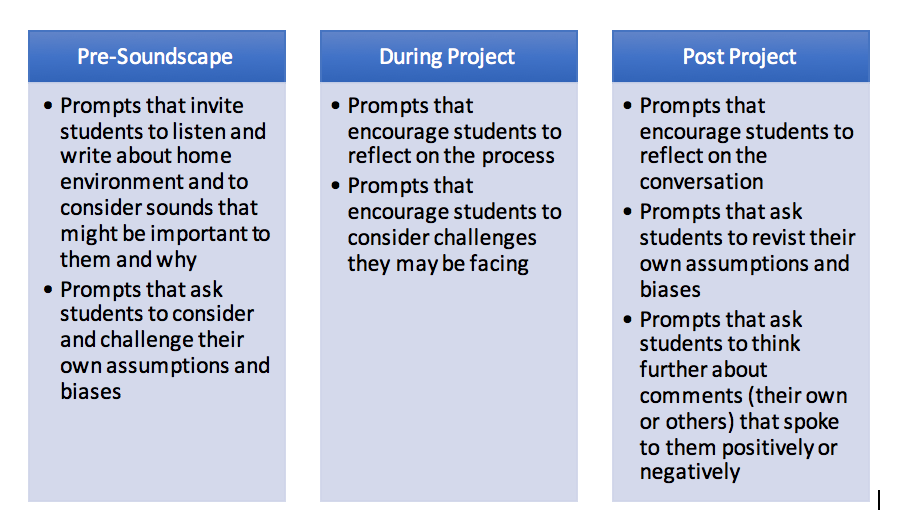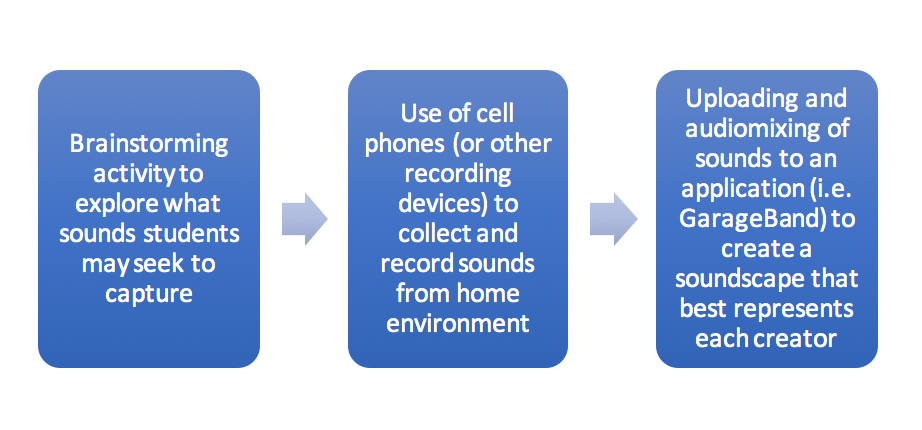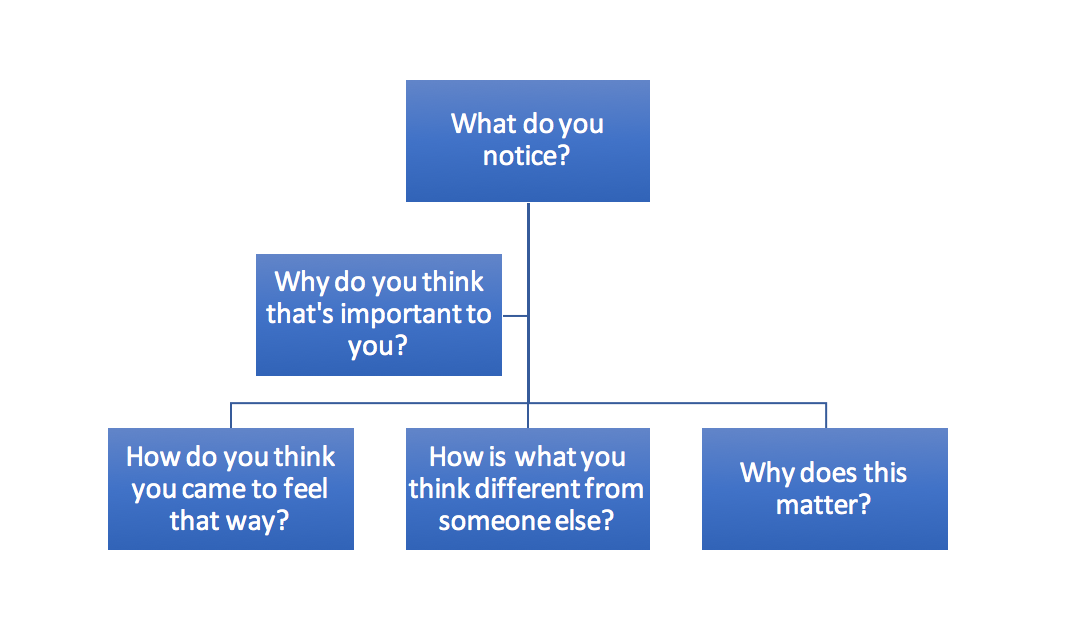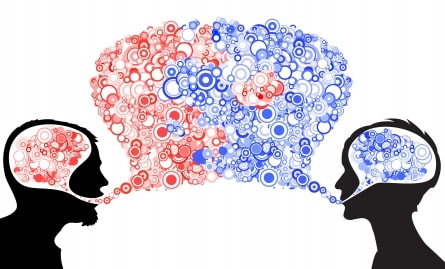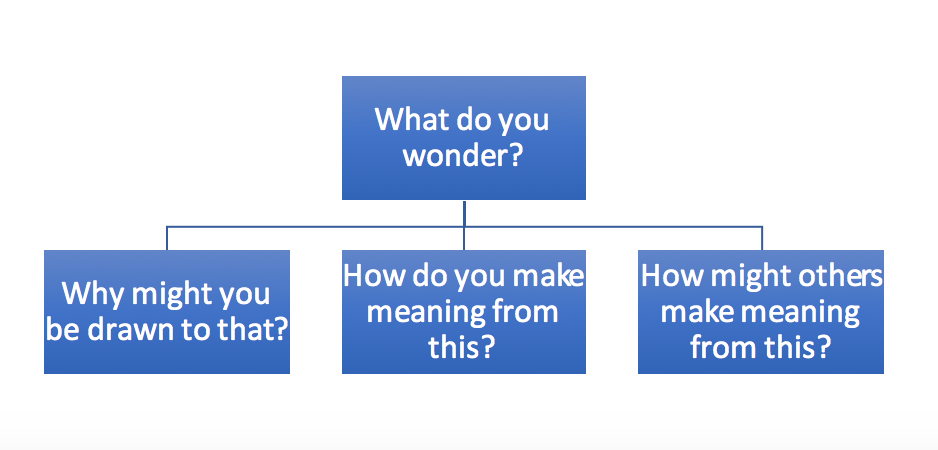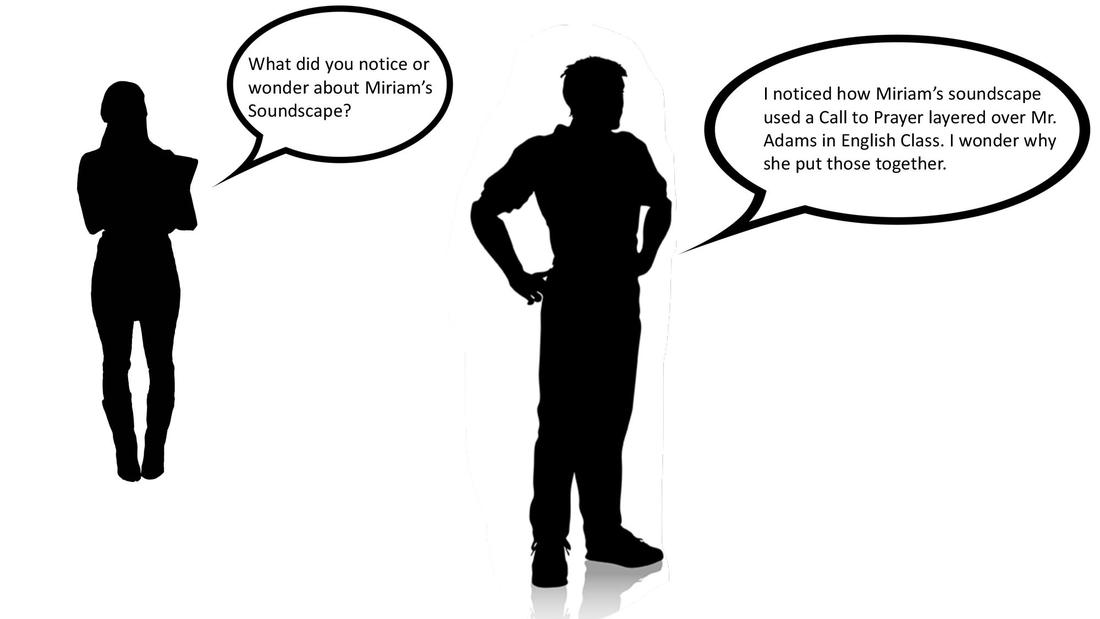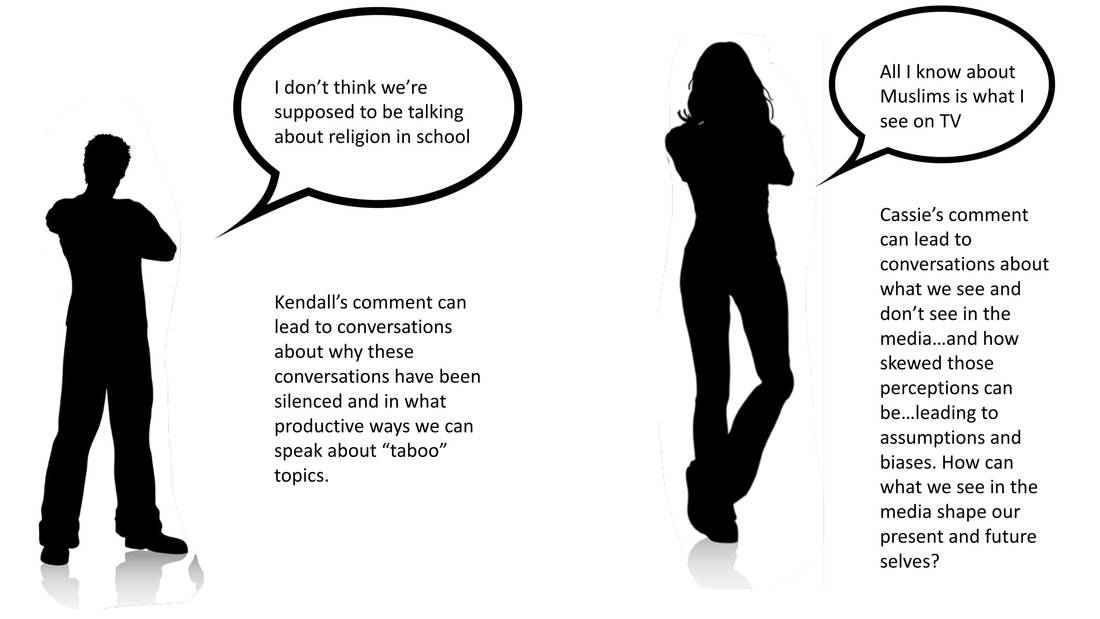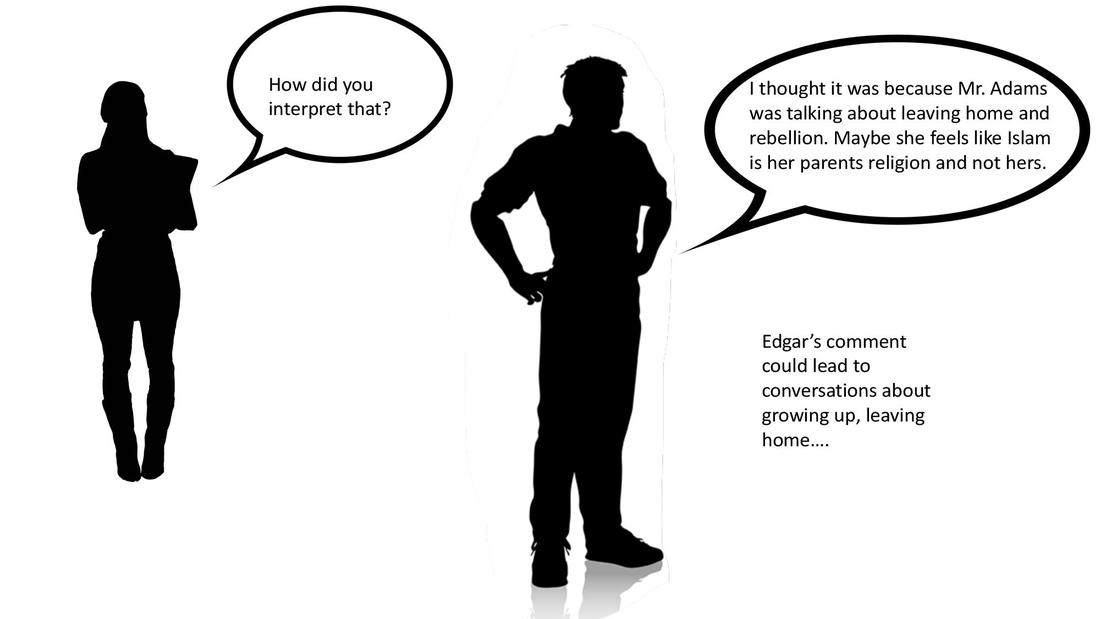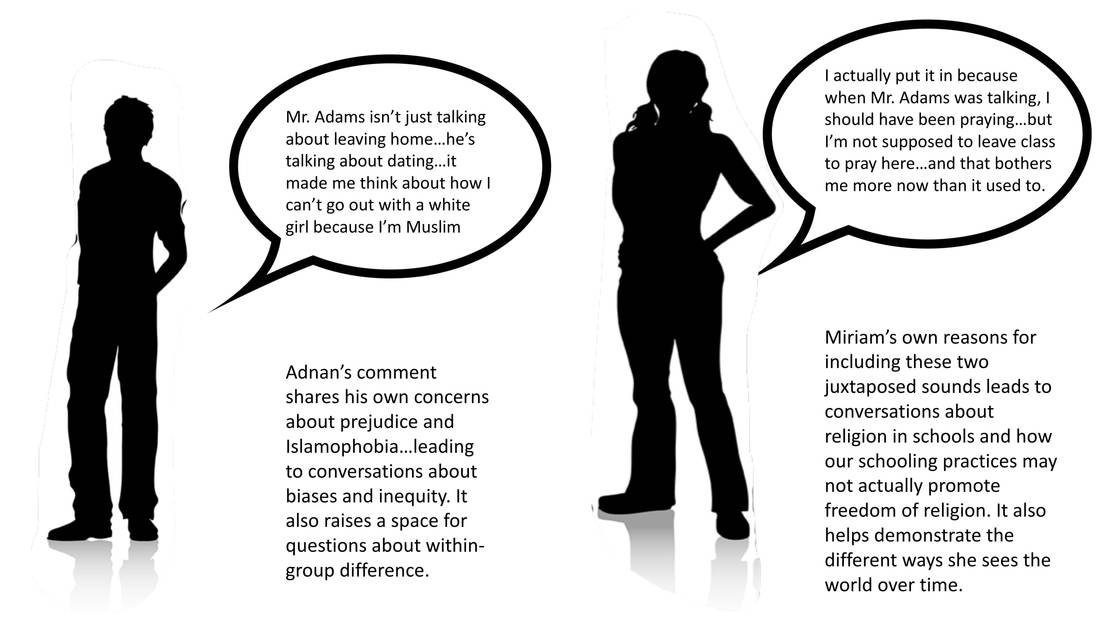The Process
As explained further in the "WHY?" section, this project is about using soundscapes as a tool for engaging in critical reflection with students. While the process is flexible and should be adjusted to fit the needs of the students, educator, and school/community environment, I've outlined the process below and then further explained each segment through models.
More information about each element of the project is offered below:
- Pre-Creation Reflection Activities
- This model utilizes both reflection-in-action (dialogue) and reflection-on-action (journaling).
- JOURNALING: Guiding questions that encourage to explore and think about sound in their lived experiences that are meaningful to them should be used. This is a great place for a listening journal! Questions that encourage students to think about the complicated role of sound in their lives might also be useful.
- DIALOGUE: Learning to listen. Ask students to explore questions related to listening: •
- When do you feel listened to?
- Do you know anyone who cuts you off when you talk? Or someone who always has a better tale to tell or ‘one-ups’ your own story? How does that make you feel?
- What does it mean to listen?
- When do you feel listened to?
- This model utilizes both reflection-in-action (dialogue) and reflection-on-action (journaling).
- Use of recording device (such as cell phones) to collect and record sounds from home/neighborhood environment
- Encourage to collect LOTS of sounds that might be meaningful and encourage them to continue collecting as they are working on the project. They will likely become increasingly aware of soundmarks (sound collections unique to a community) as they continue working. They can always add more! (Note: Can't have students record sounds? Use a website like www.freesound.org!)
- Uploading of sounds to a mixing program (i.e. Garage Band or Audacity)
- Encourage students to spend time playing around with these programs until they see everything they have to offer.
- Student Mixing Time/Soundscape Creation
- The goal is not to create a timeline of events throughout their day...the goal is to mix, pair, and layer sounds in ways that are representative of them and the way they are reading their world.
- Mid-Project Reflection Activity
- JOURNALING: What are the noticing about the choices they're making? What is surprising them? What questions do they hope people will ask?
- DIALOGUE: Students practice asking “why” and "how" (This is a great spot for students to make revisions and share portions of their soundscapes as well!)
- Why do you think you chose this?
- Why do you find this meaningful?
- What questions do you hope this will prompt?
- How is this helping you think about how you see your world?
- Why do you think you chose this?
- Interview Portion
- Taking the time to interview someone about the way they experience the sonic world has several goals: It can encourage students to think about questions arising as they are working on the project, it can encourage them to consider someone else's perspective, it can uncover questions and themes they may not have considered, and it can help them in their own reading of their sonic experience. This isn't necessary for the project, but can be an addition to help students practice listening outside of class and to reflect on someone else's experience.
- Presentation of Soundscapes
- I would advise not having students formally present their completed soundscapes. I've found having each student play their soundscape and then creating space for the students to dialogue about their soundscape (see below) creates more opportunities for discussion versus having each student present individually.
- Soundscape Dialogue
- This is the crux of this project. I've expanded on the dialogue below, but the goal of this portion of the project is for the teacher to pose open-ended guiding questions that create space for conversation about what students heard and how each made their own meaning from the presented soundscape. As this continues, students become the questioners themselves, thinking about how their different readings present different lenses through which to read the world.
- Post-Project Reflection Activity
- While the dialogue is critical, it is also the post-project reflection journaling that encourages students to think about how they may view their world, their classmates, their school, their neighborhood, etc. differently post-project. More importantly, they might reflect on how this may impact them moving forward.
More information about each element of the project is offered below:
JOURNALING (Reflection-On-Action)
Journaling should be a place for students to explore how they name and read their world. Ongoing journaling can provide space for students to explore topics they might not want to share in class or to reflect on the experience once complete. Journaling is also a space where students might think further about what it means to listen and to be listened to in these spaces.
Journaling should be a place for students to explore how they name and read their world. Ongoing journaling can provide space for students to explore topics they might not want to share in class or to reflect on the experience once complete. Journaling is also a space where students might think further about what it means to listen and to be listened to in these spaces.
- Describe what you heard
- Describe what you felt while listening to that composition
- What did you find significant? Why do you think you found this significant?
- Is there another point of view that you could explore – are there alternative interpretations to consider?
- What surprised you about what you heard? Why?
- What surprised you about your own compositional choices? Why?
- How are you connecting what you are hearing with personal experiences?
- What questions do you have for the composer?
- What questions do you wish someone would ask you about your composition?
- Are there ethical / moral / wider social issues that you would want to explore based on our discussion or what you heard?
CREATING THE SOUNDSCAPE
Soundscapes can be created using a variety of free programs, provided school and students have access to computer technology. If students have access to GarageBand, the editing process is fairly intutitive. Audacity is an alternative to using GarageBand, though with a steeper learning curve. Soundation can be an option for Chromebooks. Soundtrap and Bandlab may be helpful if your school has a subscription package. The actual process is quite flexible and can be adapted for each student to create a soundscape that best represents their lived experiences.
Soundscapes can be created using a variety of free programs, provided school and students have access to computer technology. If students have access to GarageBand, the editing process is fairly intutitive. Audacity is an alternative to using GarageBand, though with a steeper learning curve. Soundation can be an option for Chromebooks. Soundtrap and Bandlab may be helpful if your school has a subscription package. The actual process is quite flexible and can be adapted for each student to create a soundscape that best represents their lived experiences.
|
DIALOGUE (Reflection-In-Action)
Rather than only asking students to present (and even explain) their work, the soundscapes should be seen as catalysts to further conversation. Dialogue is about listening and reflecting in the moment. Prior to the project, dialogue might explore what it means to listen and hear one another. Mid-project, dialogue might be utilized to help students reflect on their own process as they make and revise their soundscapes. Post-project, dialogue might be utilized to help students reflect on different ways of hearing and experiencing the same soundscape, potentially prompting conversations about positionalities and the ways our own experiences shape how we see the world. Similar topics to those presented in the journaling section might also help here as prompts. Example questions are listed to the right...and an example conversation is listed below: |
Suggestions for further classroom ideas? Click the button below to contact us!
